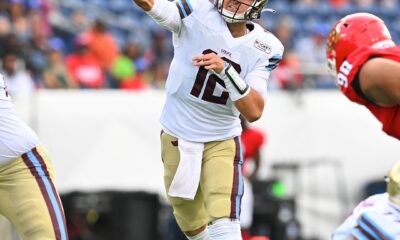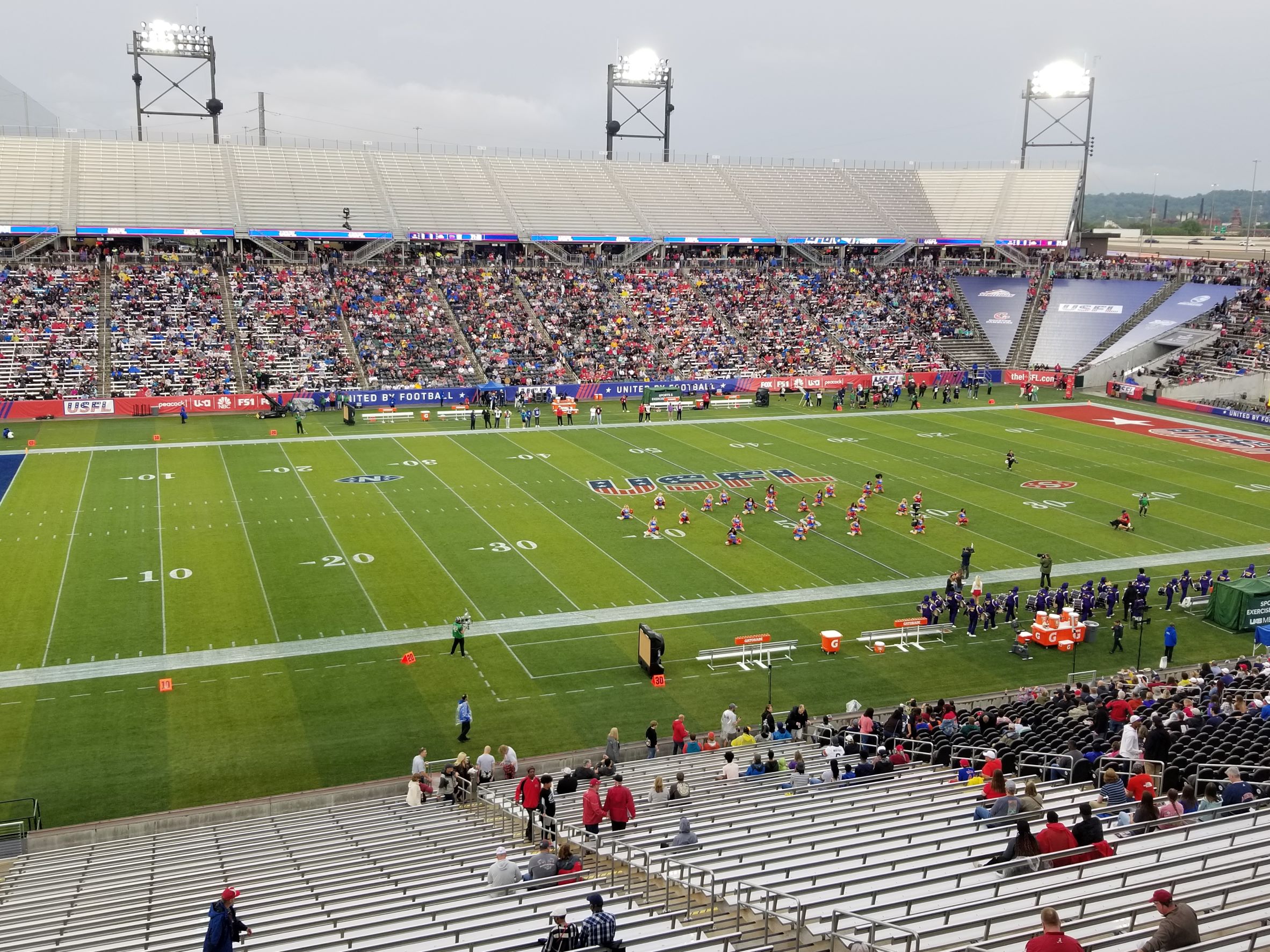
The inaugural USFL season kicked off on April 16, 2022 to the tune of 17,500 attendees and over 3 million TV viewers on average combined from the Fox and NBC networks coverage. It was the return of Spring football in a respectably-sized stadium setting with crowds since the XFL played matches in March, 2020. It marked a notable return for a Birmingham professional team and another notch in the belt for Spring football as a player in pigskin economics.
Birmingham, Alabama being designated as a hub city is certainly a unique choice considering its population of 212,297 (2019) and its proximity as an air travel destination. Birmingham hosts a respectably sized airport, but nowhere near the scope of other venues that makes for more accessible and cheaper travel accommodations. Its quaint enough to have its own charm as suburban threshold, but does not necessarily an overwhelming selection for the average person to spend a getaway weekend.
For the casual viewer tuning into a game there may also be confusion to where exactly these teams are playing. The average viewer most likely expects when the Tampa Bay Bandits are “away” against the New Orleans Breakers that logically one would be viewing a game in New Orleans. Early returns suggest finding local support for outsider teams will be minimal. The Stallions are the only team that possesses a true home field advantage and perhaps the only one with any vocal crowd support in the league.
What can be found is that this hub city meant to cradle the USFL extends past just being a mystifying concept to a national audience; attracting an in-person audience is a grassroots issue. Birmingham, Alabama inevitably was going to possess challenges of not being a sprawling metropolis nor a easy to access air travel destination. To reach beyond these foreseen limitations are potential extenuating circumstances that logistically limit the USFL’s ability to attract not only municipal visitors, but the local populous as well.
Legion Field Casts Its Shadow
Protective Stadium is the shiny new MacGuffin in town having opened in October, 2021. With any new community fixture means that significant funds were devoted to its constriction. Simultaneously this means that those finances were pulled from another project that some supporters believe were more deserving. In this instance, it is Birmingham’s previous football mecca Legion Field.
There is some sentiment in Birmingham that city funds should be devoted towards revitalizing and maintaining Legion Field and the area surrounding the stadium. Instead, car rental tax funds were injected into the Protective Stadium project leaving the Legion Field in need of repairs. This has also created fear for what may lead to an inevitable end to Legion. Several Birmingham individuals I spoke with indicated this has left some citizens disillusioned with the idea of supporting operations within the new venue. Nostalgia for a still standing iconic venue may be one cause of locals’ slow acceptance of Protective.
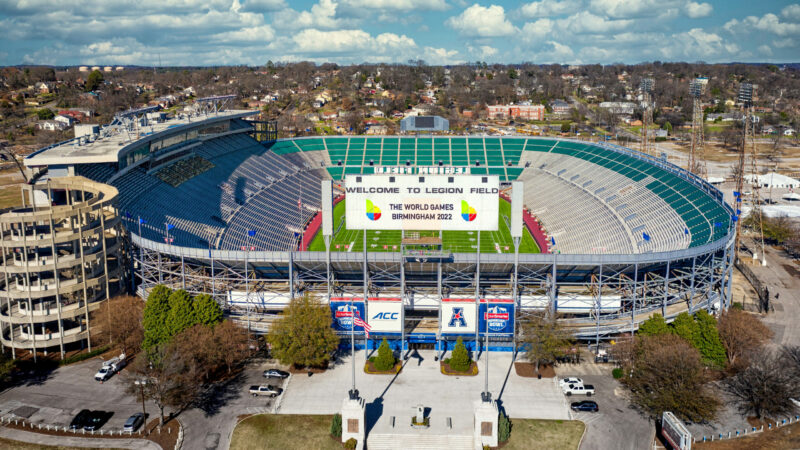
City-wide Construction
In February the USFL announced that it would hold its inaugural playoffs in Canton, Ohio on June 25 and July 3. However, this announcement came after they attempted to use Legion Field for the same purpose. The problem was that the stadium would be occupied for the World Games set to kickoff in July and required adequate time to prepare the facility. This slight snafu became potentially rectified with the relocation to the Canton venue.
There is another complicating factor caused by the World Games that could impact foot traffic into Protective. Because of the necessity for revamped amenities and accommodation for the games, the city of Birmingham government required many roads to close and small businesses relocate as to allow for construction around the city. This includes the closure of sidewalks, most visibly in the downtown area and around the stadium. Simply walking to Protective required maneuvering around chain link fences and dirt patches, less than ideal for pedestrians.
It was evident on opening night following the Birmingham Stallions comeback versus the New Jersey Generals that the immediate vicinity surrounding the stadium was not adequately prepared to accommodate throngs of attendees. Hungry customers were turned back at various establishments due to reaching capacity and were forced to seek nourishment elsewhere. The lack of options in the nearby area created a missed opportunity for the city to cash in on the drastic influx of potential income and it can no doubt be attributed to the lack of services available.
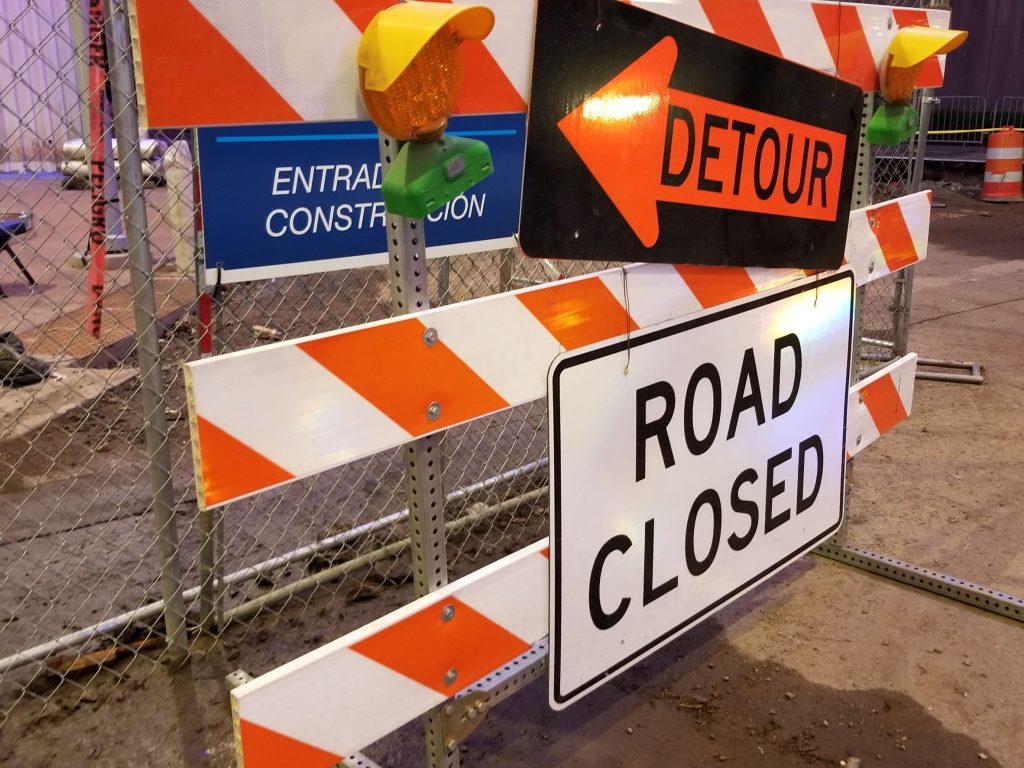
The Weather
On opening weekend concessions could be made that doom-and-gloom weather forecasts and Easter Sunday heavily impacted crowds coming out in full force. These could be observed as isolated instances that affected one weekend of play, but the weather may not be a one-off phenomenon. Birmingham regularly experiences high humidity levels and maintains as a ripe candidate for high precipitation and lightning storms.
Wet and potentially hazardous conditions understandably deter people from even stepping outside. As one woman working in the hotel I was staying at told me, these events essentially “shut down the city.” On top of that, the ticket price does not inspire an audience to face mother nature in the interest of getting their money’s worth. $10 for an all-day pass is an excellent deal to attract viewers, but it is an investment that is so low cost to the point where deciding not to appear because of an ominous forecast does not include substantial loss. One can effectively eat the minor fees and come another day.
A domed establishment could have eradicated the potential risks involved with scheduling around erratic micro climate. Even The Spring League was hosted indoors first in San Antonio in 2020 and then partially in Indianapolis for the northern division teams in 2021. Again though, these are deliberate spending maneuvers by Fox in order to cushion the financial setbacks the league could face if operations do not go according to plan.
It is one thing to host 6-10 matches in a season as a single host. It is another when faced with the daunting proposition of essentially betting against mother nature for all forty games played in 10 consecutive weekends with the hope of experiencing minimal interference. An irregular schedule created in anticipation or reaction to weather events can also throw off in-person attendees and television viewers. Optics are important to the state of exhibiting a new league. Crowd presence matters for television audiences, players and fans.
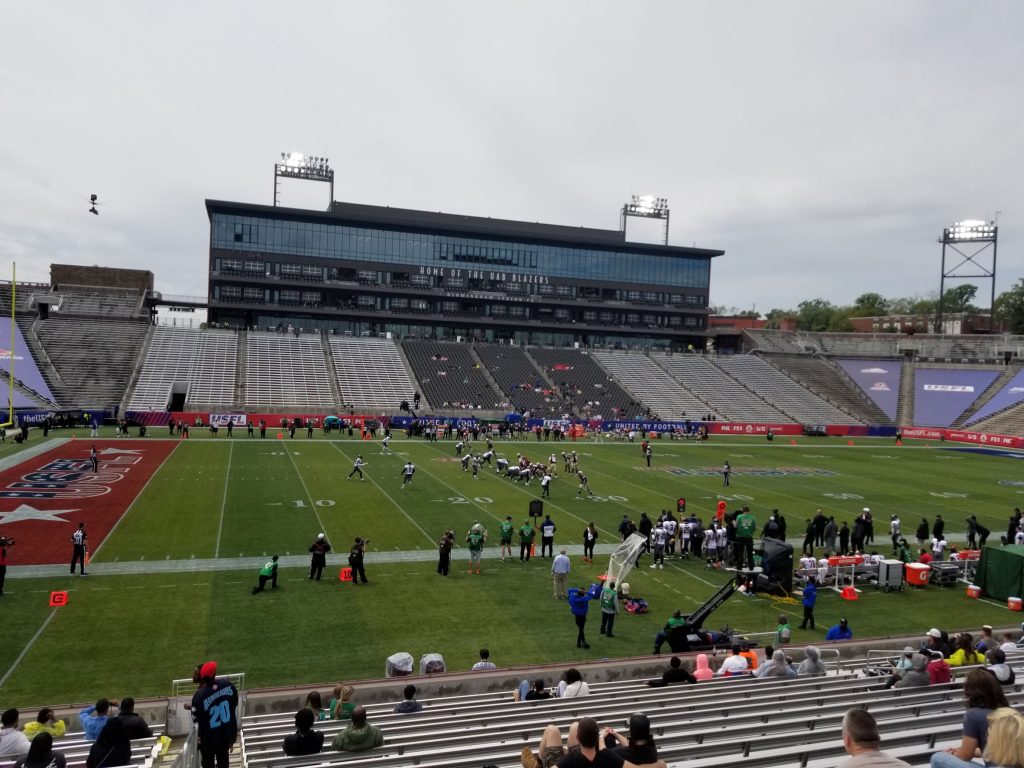
An Uphill Battle
Convincing thousands of potential venue visitors to come flocking to Birmingham is a quandary considering the present obstacles. Poor weather conditions and Easter Sunday certainly played roles in limiting the USFL’s opening weekend fanfare, but there are several other factors that may prevent this from being a super inhabitable stadium throughout the Spring. The financial incentives for Fox to choose Birmingham as its hub city are on full display, but with those incentives comes risk of how other logistical nuances can interfere in exhibiting their product locally and nationally. Ultimately, these cost cutting procedures may cost the league butts in seats, and an authentic relationship with the Magic City.












